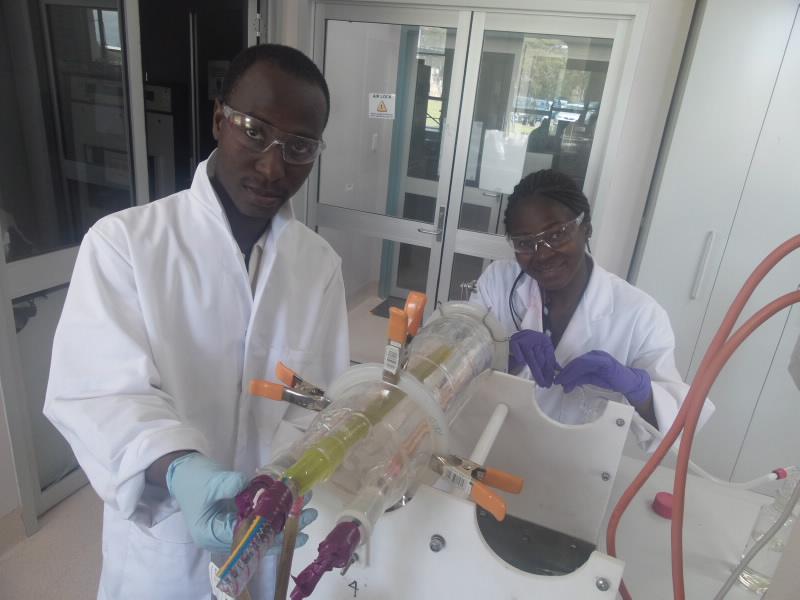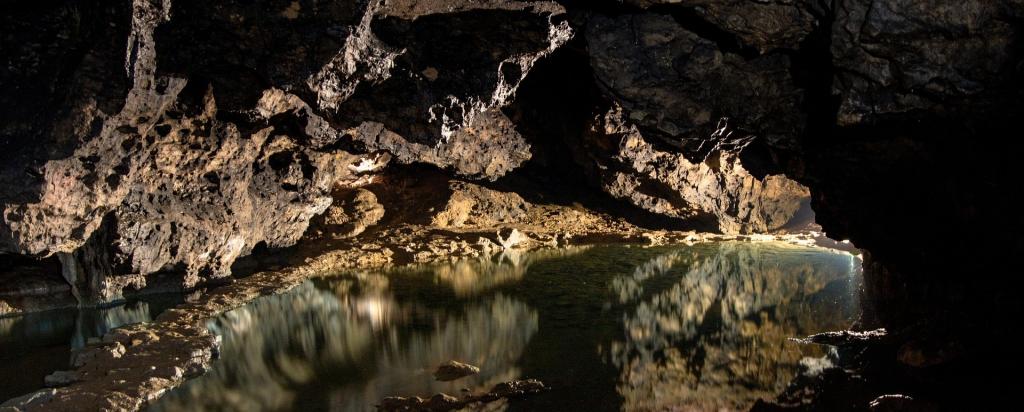

Published on the 12th March 2015 by ANSTO Staff
It is located in West Africa and is a country just the size of Victoria, but while geography sets us apart, two things Ghana and Australia have in common are areas with not much rain or enough water.

Ruby Torto and Jacob Asomaning visited ANSTO to learn a technique called low level tritium analysis, which is used in underground water sources to determine how old the water is.
It was shared climate similarities and water supply issues which recently brought two laboratory researchers from the Republic of Ghana to Sydney’s Sutherland Shire.
They were based at ANSTO for February 2015 on an International Atomic Energy Agency (IAEA) fellowship to study underground water movement.
Ruby Torto and Jacob Asomaning were at ANSTO to learn a technique called low level tritium analysis, which is used in underground water sources to determine how old the water is, and its ‘recharge rate’.
Trace amounts of the radioactive isotope, tritium, are found in everyday rainwater, and like all radioactive materials, the radioactivity decays away over a known period at a prescribed rate.
“Tritium analysis measures the radioactivity, and therefore age, of underground water samples, and can be used to determine how quickly an underground water aquifer refills when it rains,” said ANSTO Laboratory Manager, Robert Chisari.
“By determining the age and then recharge rate from several samples, we can identify if we are analysing a sustainable source of underground water, or simply old water which has been trapped for years.
“Managed well, the former is a potential sustainable source of drinking water in arid lands – particularly if it refills relatively quickly and often. On the other hand, the latter, if tapped, would eventually run dry.”
Tritium analysis is a highly accurate way of identifying sustainable water sources, which has been used by ANSTO scientists in Australia over many years, using state-of-the-art liquid scintillation counters.
The two laboratory researchers were at ANSTO from Ghana to learn about the full eight week process between taking a sample, analysing it in a laboratory, and producing then interpreting the relevant data.
“What we want to be able to do is analyse water sources, particularly in the northern part of Ghana, to understand their origins and movement using isotopes,” said Mr Asomaning.
“As we speak, Ghana is establishing an isotope lab to start laboratory tritium analysis, and we are to bring this science to our region.”
Ms Torto stressed the importance of sustainability in water supply for her country.
“Our part of the world is an arid place, and this project will enable us to see how groundwater can be used to sustain our communities for a period of time,” she said.
“Groundwater is a major portable source of water supply, and we are seeking new ways to find water which has less quality issues in terms of acidity, good yield and good recharge rates.”
While working at ANSTO the laboratory researchers stayed in Jannali, and on weekends also had the opportunity to experience life in the Shire and see a few Sydney sites.